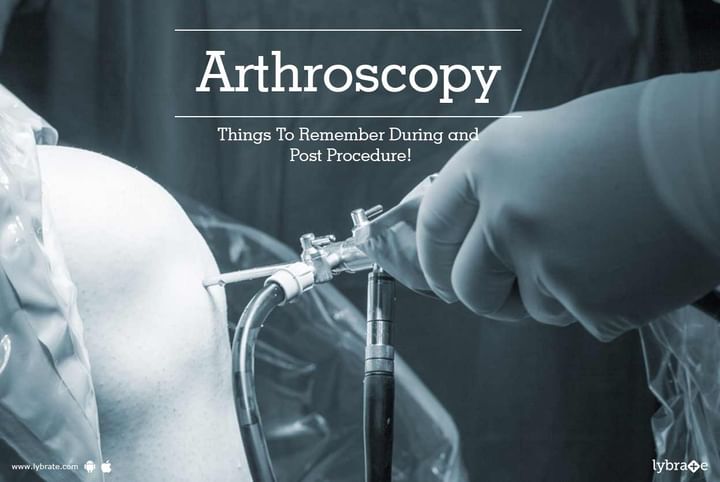Get the App
For Doctors
Login/Sign-up
Last Updated: Oct 23, 2019
BookMark
Report
Arthroscopy - Things To Remember During and Post Procedure!
Dr. Arun PartaniOrthopedic Doctor • 14 Years Exp.DNB (Orthopedics), Fellowship in Joint Replacement, MS - Orthopaedics
Literally translated into two words – arthro (joint) and scopy (to look), arthroscopy refers to a process used to look into a joint. The doctor uses an instrument known as arthroscope which is used to examine a joint in greater detail. What was initially used mainly in diagnosis has gradually grown to include use of instruments through the arthrocope, thereby allowing for some surgical treatments to be done as well.
Indications/uses:
- Diagnosis of joint problems like cartilage tears
- Repairing joint problems
- Remove foreign bodies in a joint
- Track response to treatments
- Identify disease progression
- Used during an open surgery to:
Procedure:
- Usually done as an outpatient procedure
- The procedure in terms of what to expect will be explained to the patient
- A sedative is given and the area to be studied is usually shaven and topical antiseptic is applied
- Vital signs are monitored
- Regional or local anethesia is generally used, where only the joint to be studied is injecte with a local anesthetic.
- In cases where the patient is undergoing an open surgery, general anesthesia would be given.
- The patient’s position would depend on the joint being studied, usually, is made to lie on the back.
- A tourniquet is used to restrict blood flow to the particular joint
- A small incision is made in the joint space and the instrument is introduced into the joint space. There is a constant slow flow of saline or another irrigant (to which chlorhexidine might be added) to improve visibility and to remove debris and control infection
- Other joint tools are used as required during the procedure either to cut off small fragments of tissue or to remove debris or foreign body.
- Once all procedures are done, the joint is thoroughly flushed to clear off any debris.
- It is closed with stitches after final inspection
- During recovery, crutches or splints may be used depending on the patient’s overall condition
- Duration of the procedure depends on what actually was done. An inspection could last about 20 minutes while a procedure could take a couple of hours.
After the procedure:
- Complications are very rare, maybe painful operated joint for a couple of days
- Rest the joint well for a couple of days
- Ice, pain killers, and compression bandage may be required
- Return to normal activity and exercises to be followed as dictated by the orthopedist.



+1.svg)
